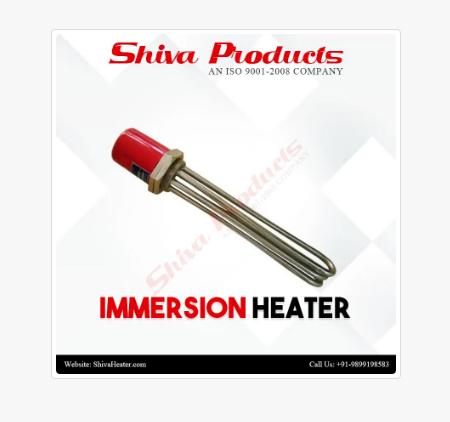
Immersion heaters are indispensable appliances, especially in regions where cold weather is a constant companion. They ensure a steady supply of hot water, making daily chores convenient and comfortable. However, like any other appliance, these heaters can encounter problems. From minor glitches to major breakdowns, issues with immersion water heaters can disrupt your routine.
In this blog, we’ll discuss some top tips for troubleshooting common problems with immersion heaters, helping you to identify and possibly resolve issues without the need for professional assistance.
Introduction to an Immersion Heater:
Before diving into troubleshooting, a basic understanding of your immersion water heater’s components goes a long way. Here’s a quick breakdown:
- Heating Element: This is the heart of the heater, responsible for converting electricity into heat. It’s typically made of a metal coil encased in a protective sheath.
- Thermostat: This crucial component acts as a temperature regulator, switching the heating element on and off to maintain the desired water temperature.
- Safety Features: These heaters often incorporate safety features like thermal cut-outs, which automatically shut off the power if the water becomes too hot.
Where are these heaters used?
The applications of immersion heaters are diverse, ranging from household uses to industrial processes. Here are some common examples:
- Domestic hot water: Immersion heaters are often found in hot water cylinders as backup or supplementary heating elements.
- Portable water heating: Compact heaters are perfect for heating water in buckets or large containers for various purposes like bathing or preparing cleaning solutions.
- Pool and spa heating: Immersion water heaters can be used to maintain desired water temperatures in pools and spas, especially in cooler climates.
- Aquariums: They can help regulate water temperature in aquariums, crucial for maintaining a healthy environment for aquatic life.
- Industrial processes: In various industries, immersion heaters play a vital role in heating liquids for diverse applications, from food processing and chemical manufacturing to oil and gas production.
Arming Yourself for the Challenge:
Safety is paramount when dealing with electrical appliances. Before getting started, ensure these safety precautions are in place:
- Turn off the power: Locate the immersion heater’s dedicated circuit breaker on your main electrical panel and switch it to the “off” position.
- Gather your tools: You’ll need a basic toolkit, including a multimeter (optional for advanced troubleshooting), screwdriver (for thermostat adjustments if applicable), and descaling solution (if tackling limescale buildup).
A Step-by-Step Guide to Immersion Heater Troubleshooting:
Now, let’s delve into the specific issues you might encounter and the steps to address them:
No Hot Water:
- Check the basics: Is the heater switched on and set to a high enough temperature? Ensure it’s fully submerged in the water tank.
- Verify the power supply: Check the circuit breaker and the fuse (if your system uses them) to ensure they haven’t tripped or blown, respectively.
- Inspect the thermostat: Consult the manufacturer’s manual for specific instructions on resetting the thermostat. Sometimes, simply adjusting the dial might be all it takes.
- Consider limescale buildup: This can significantly reduce heating efficiency. Descale the heater according to the manufacturer’s instructions or seek professional help for stubborn deposits.
Slow Heating:
- Investigate limescale buildup: Similar to the previous scenario, descaling can significantly improve heating performance.
- Check the element: While less common, the heating element itself might be faulty. If you suspect this, it’s best to consult a qualified electrician for replacement.
Water Not Reaching Desired Temperature:
- Adjust the thermostat: Ensure the thermostat is set to the desired temperature and functioning correctly. Refer to the manual for instructions on calibration or adjustment.
- Inspect the element: A faulty element might not be able to reach the desired temperature efficiently. Seek professional help for replacement if necessary.
Unusual Sounds or Noises:
- Air Trapped in Tank: Air trapped inside the tank can cause noises and vibrations during heating. Bleed the system to release the trapped air.
- Loose Components: Check for loose or damaged components such as heating elements, thermostats, or fittings. If the sounds are concerning, it’s best to call a qualified electrician to diagnose and potentially replace the faulty parts.
Tripped Circuit Breaker:
- Overloading: If the immersion heater is connected to other high-power appliances on the same circuit, it may overload the circuit and trip the breaker. Consider redistributing the load or installing a dedicated circuit for the heater.
- Short Circuit: Inspect the wiring for any signs of damage or exposed wires that could be causing a short circuit. Replace damaged wiring and ensure proper insulation.
- Reset the breaker: If the breaker trips once, simply switch it back to “on.” However, repeated tripping suggests a potential overload or a fault in the heater itself. In such cases, do not reset the breaker and seek professional help.
Advanced Troubleshooting (Optional):
If the basic steps haven’t resolved the issue, you can attempt some additional troubleshooting (with caution and at your own risk):
- Testing the thermostat: Using a multimeter, you can check the continuity of the thermostat according to the manufacturer’s instructions. A faulty thermostat will show an open circuit.
- Testing the element: You can also test the resistance of the element using a multimeter. The resistance should fall within the manufacturer’s specified range. A significantly lower or higher reading indicates a faulty element.
Bonus Tips:
- Regularly descale your immersion heater: This prevents efficiency loss and extends its lifespan.
- Consider upgrading to a newer model: Modern heaters offer better efficiency and safety features.
- Invest in a timer: This allows you to program the heater to operate during off-peak hours, potentially saving on energy costs.
By following these tips and adopting a proactive approach to maintenance, you can keep your heater functioning optimally and ensure a steady supply of hot water for your needs. Remember, regular maintenance and prompt attention to any issues can prolong the lifespan of your immersion heater and ensure a continuous supply of hot water for your needs.






